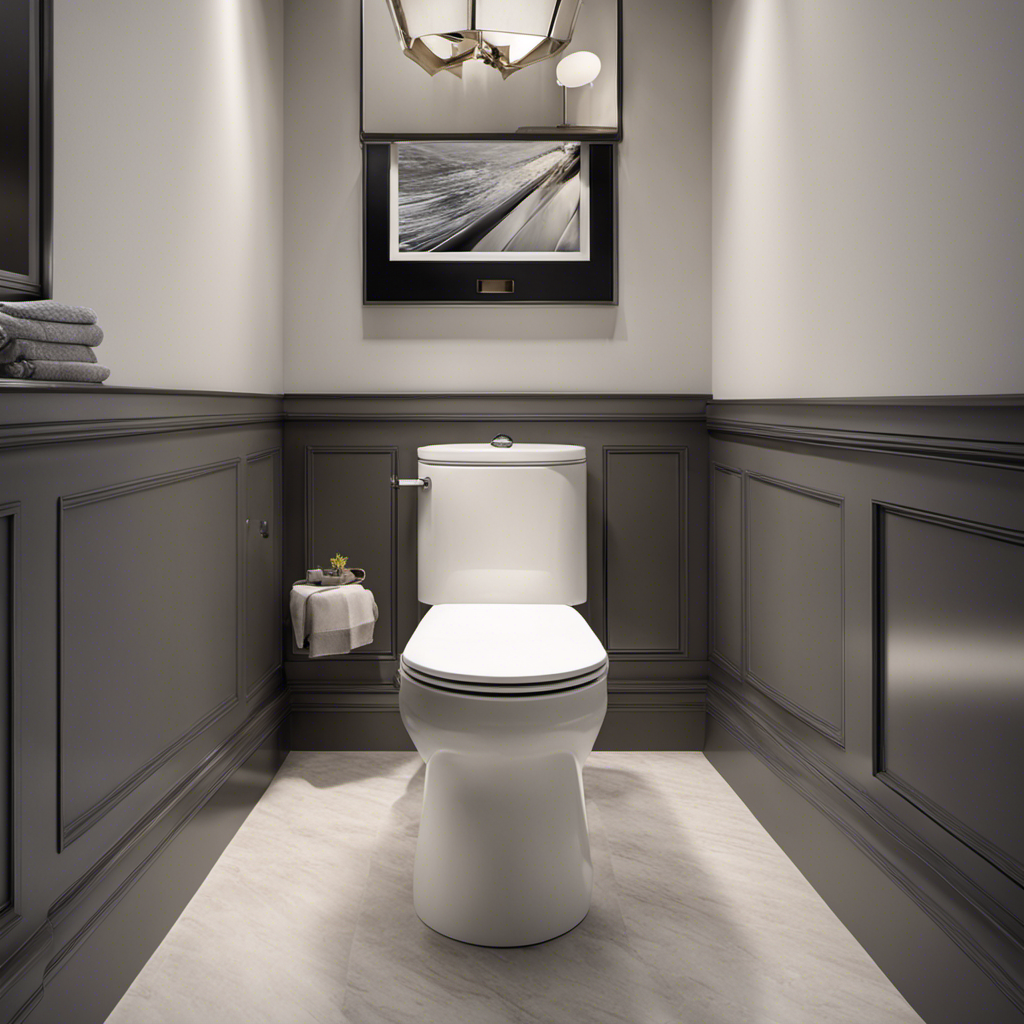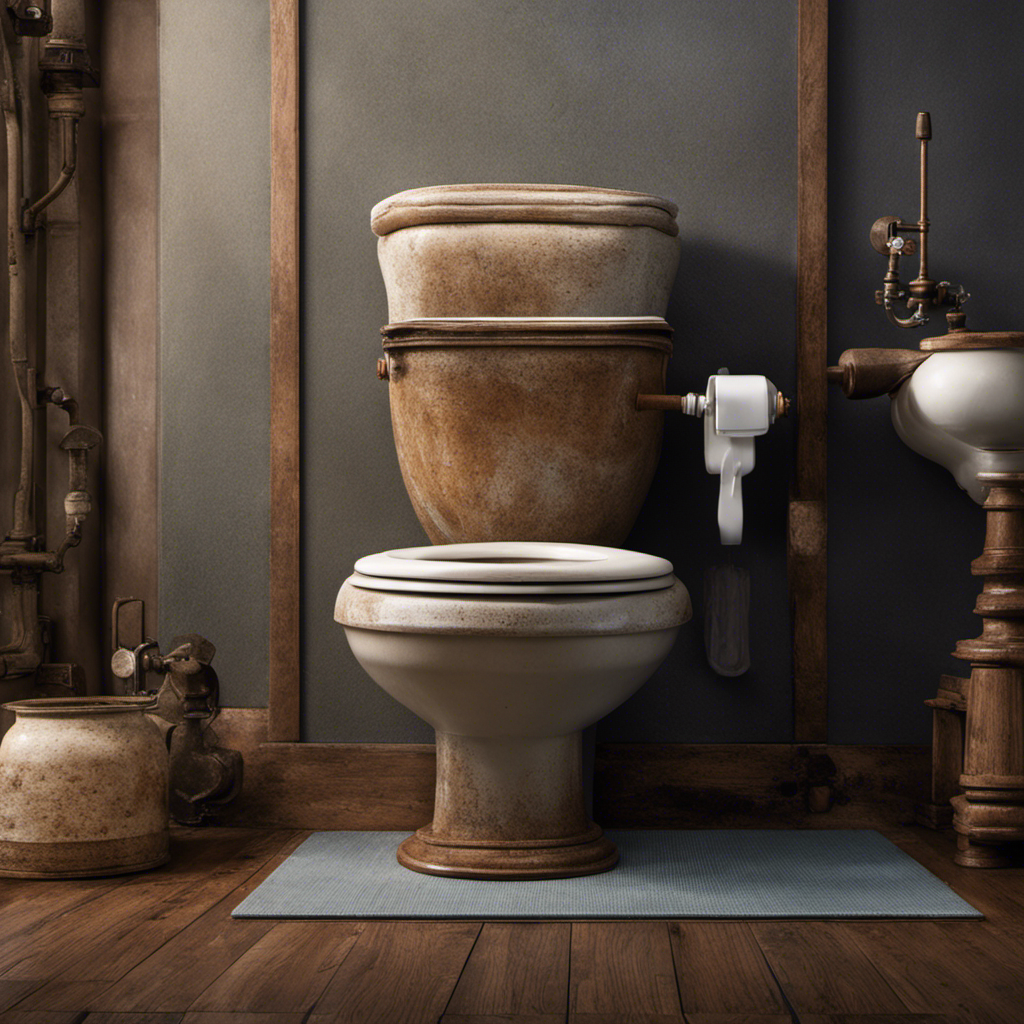As a homeowner, I’ve experienced the frustration of a randomly running toilet. It’s the kind of thing that can drive you crazy, interrupting your peaceful moments with its incessant noise.
But fear not, for in this article, I will delve into the common causes of this issue and provide you with the knowledge and solutions to put an end to the madness.
So, let’s dive in and uncover the mysteries behind why your toilet decides to run at the most inconvenient times.
Key Takeaways
- Faulty flapper valve is a common cause of a randomly running toilet and may need replacement.
- Regular inspection and maintenance of the flapper valve is important to prevent water wastage.
- The float plays a crucial role in controlling the water level in the toilet tank, and its adjustment is essential for proper water level control.
- High water pressure, mineral deposits, and damaged supply lines can also lead to a running toilet and should be addressed in troubleshooting.
Common Causes of a Randomly Running Toilet
One common cause of a randomly running toilet is a faulty flapper valve that needs to be replaced. The flapper valve is a vital component in the toilet tank that controls the flow of water from the tank to the bowl. When it becomes worn or damaged, it may not create a proper seal, causing water to continually leak into the bowl. Signs of a running toilet include the sound of running water when the toilet is not in use, a continuously spinning water meter, or a noticeable increase in your water bill.
Toilet maintenance is crucial to prevent issues like this. Replacing the flapper valve is a relatively simple task that can resolve the issue and restore the proper functioning of your toilet.
How a Faulty Flapper Valve Can Cause a Toilet to Run
A faulty flapper valve can cause a toilet to constantly run. The flapper valve is a crucial component of a toilet’s flushing mechanism, responsible for controlling the flow of water from the tank into the bowl. Over time, the flapper valve can become worn or damaged, leading to leaks and continuous running. To ensure proper functioning of the flapper valve, regular maintenance is essential. This includes checking for signs of wear, such as cracks or deterioration, and replacing the valve if necessary. Signs of a faulty flapper valve include a toilet that runs continuously or intermittently, a weak flush, or water constantly trickling into the bowl. By addressing flapper valve maintenance promptly and replacing a faulty valve, you can prevent water wastage and maintain the optimal performance of your toilet.
| Flapper Valve Maintenance | Signs of a Faulty Flapper Valve |
|---|---|
| Regular inspection | Continuous or intermittent running |
| Replacement if necessary | Weak flush |
| Water constantly trickling into bowl |
Understanding the Role of the Float in a Running Toilet
To stop your toilet from running constantly, you need to understand the role of the float. The float is a small, buoyant device that controls the water level in the toilet tank. When the toilet is flushed, the float drops down and opens the fill valve, allowing water to enter the tank. Once the water reaches a certain level, the float rises, closing the fill valve and stopping the flow of water.
Here are four important things to know about the float in a running toilet:
-
Regular toilet maintenance is crucial: Regularly inspecting and maintaining your toilet can help prevent issues like a constantly running toilet. It is important to check the float and other components for any signs of wear or damage.
-
Adjusting the float: If your toilet is running, it may be because the float is not properly adjusted. To fix this, locate the adjustment screw or rod connected to the float and adjust it to ensure the float rests at the correct height.
-
Correct float height: The correct float height is usually indicated by a fill line on the overflow tube. Adjust the float so that it rests just below this line to ensure proper water level control.
-
Test for leaks: After adjusting the float, flush the toilet and observe if it stops running once the tank is full. If it continues to run or you notice any leaks, further adjustments or repairs may be necessary.
Exploring the Connection Between Water Pressure and Toilet Running
If you’re experiencing a constantly running toilet, it could be due to high water pressure. High water pressure can have a significant impact on the functioning of your toilet and lead to continuous running.
One common issue is the presence of mineral deposits in the water supply line. These deposits can accumulate over time and obstruct the flow of water, causing the toilet to run continuously.
Additionally, the water supply line itself plays a crucial role in toilet running issues. A damaged or improperly installed supply line can result in water leakage, leading to a running toilet.
Understanding the impact of mineral deposits and the role of the water supply line is essential in troubleshooting and fixing a running toilet.
Now, let’s explore some troubleshooting tips and solutions to address this problem.
Fixing a Running Toilet: Troubleshooting Tips and Solutions
Now, you can start by checking the flapper valve in the toilet tank to see if it’s properly sealing the water flow. A running toilet can be quite frustrating, but with a bit of maintenance and troubleshooting, you can easily fix the issue.
Here are some signs of a running toilet and their solutions:
-
Constantly running water: This could indicate a faulty flapper valve. To fix it, adjust the chain length or replace the flapper if necessary.
-
Intermittent running: If your toilet randomly runs, it may be due to a worn-out flapper. Replace the flapper to ensure a proper seal.
-
Ghost flushing: This occurs when the toilet flushes by itself. It could be caused by a faulty flapper or a high water level. Adjust the float or replace the flapper to solve the problem.
-
Water leaks: Check for any leaks in the toilet tank or around the base. Replace faulty parts or tighten connections to stop the running water.
Regular toilet tank maintenance is essential to prevent a running toilet. By keeping an eye out for these signs and addressing them promptly, you can avoid unnecessary wastage of water and maintain a properly functioning toilet.
Conclusion
In conclusion, the mysterious phenomenon of a randomly running toilet can be attributed to several common causes. A faulty flapper valve can disrupt the delicate balance of water flow, while the float plays a crucial role in regulating water levels.
Additionally, water pressure fluctuations can trigger the incessant running. By understanding these intricacies and implementing troubleshooting techniques, this enigmatic issue can be resolved.
So, fear not, for with knowledge and precision, you can put an end to the elusive dance of the running toilet.










